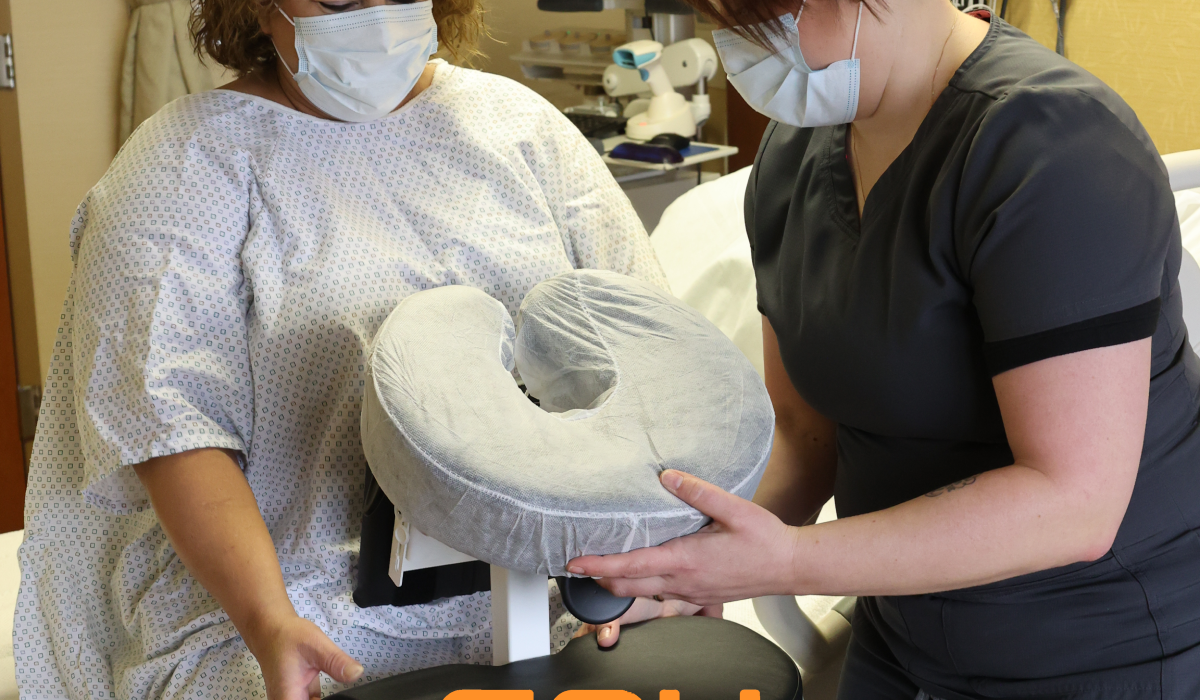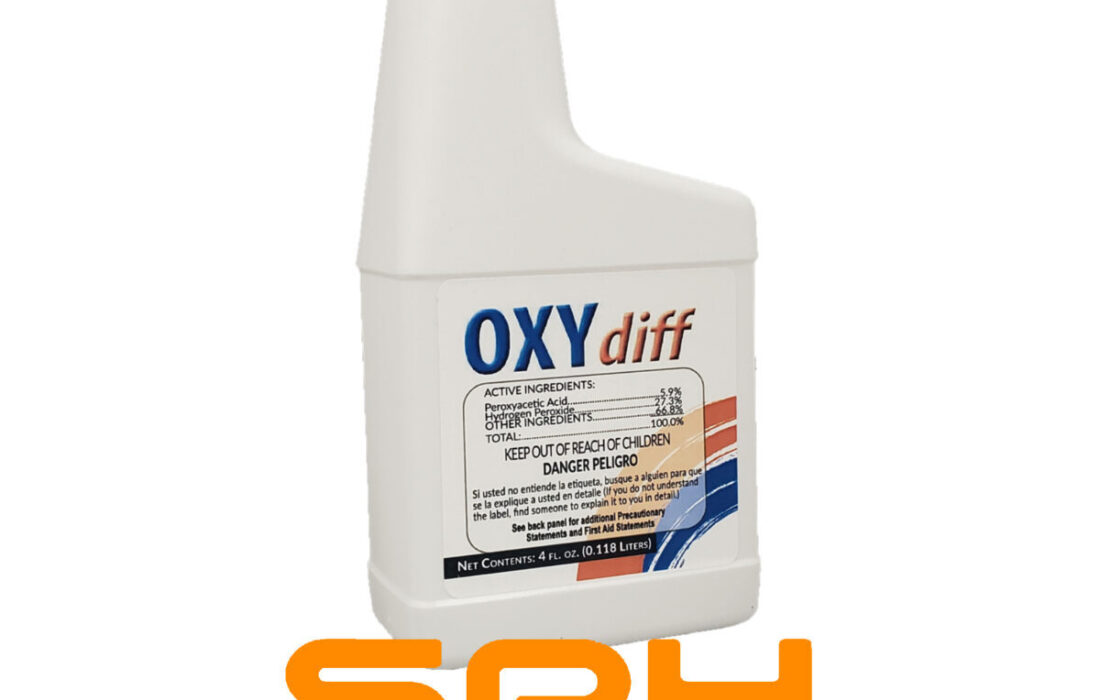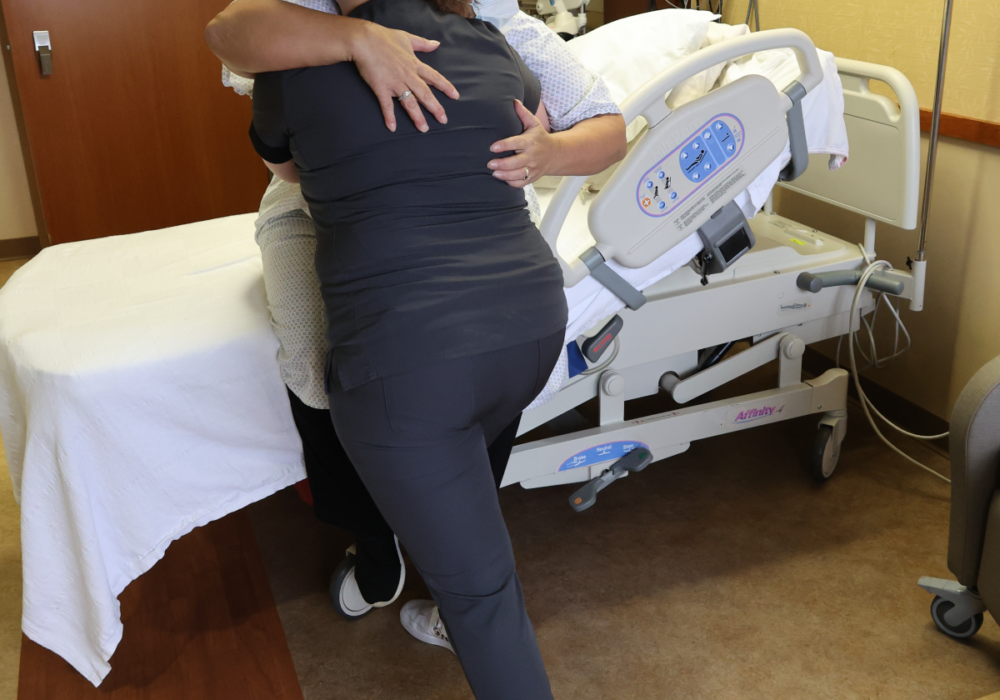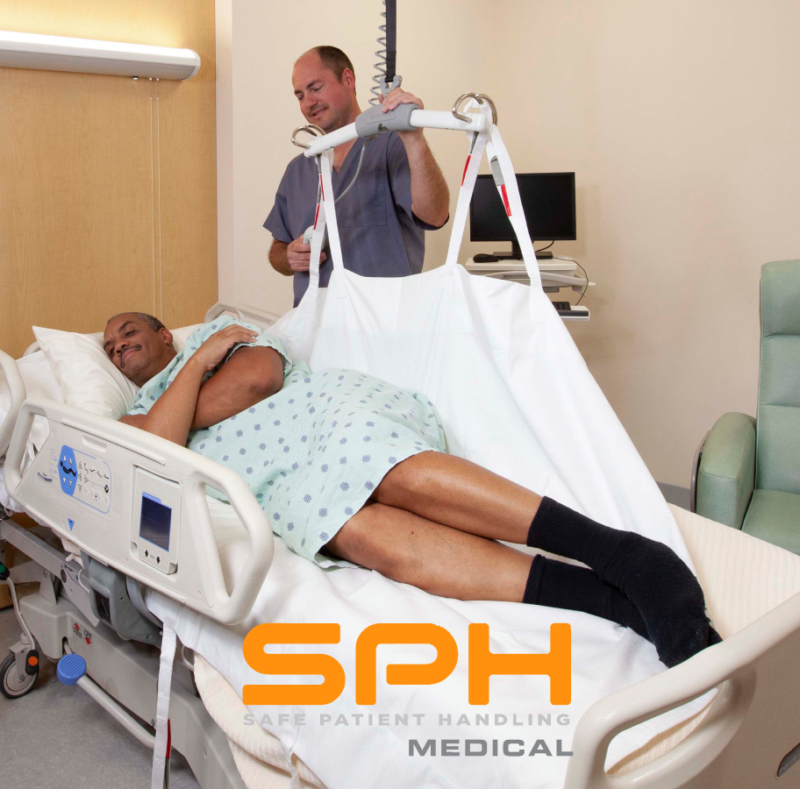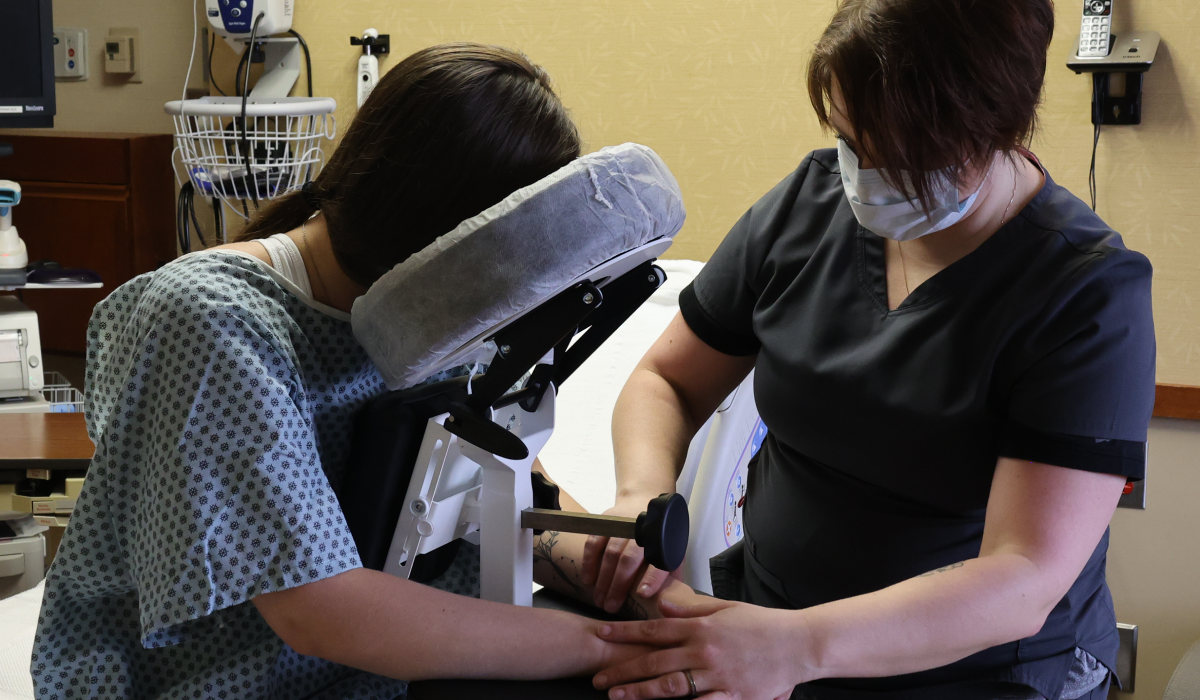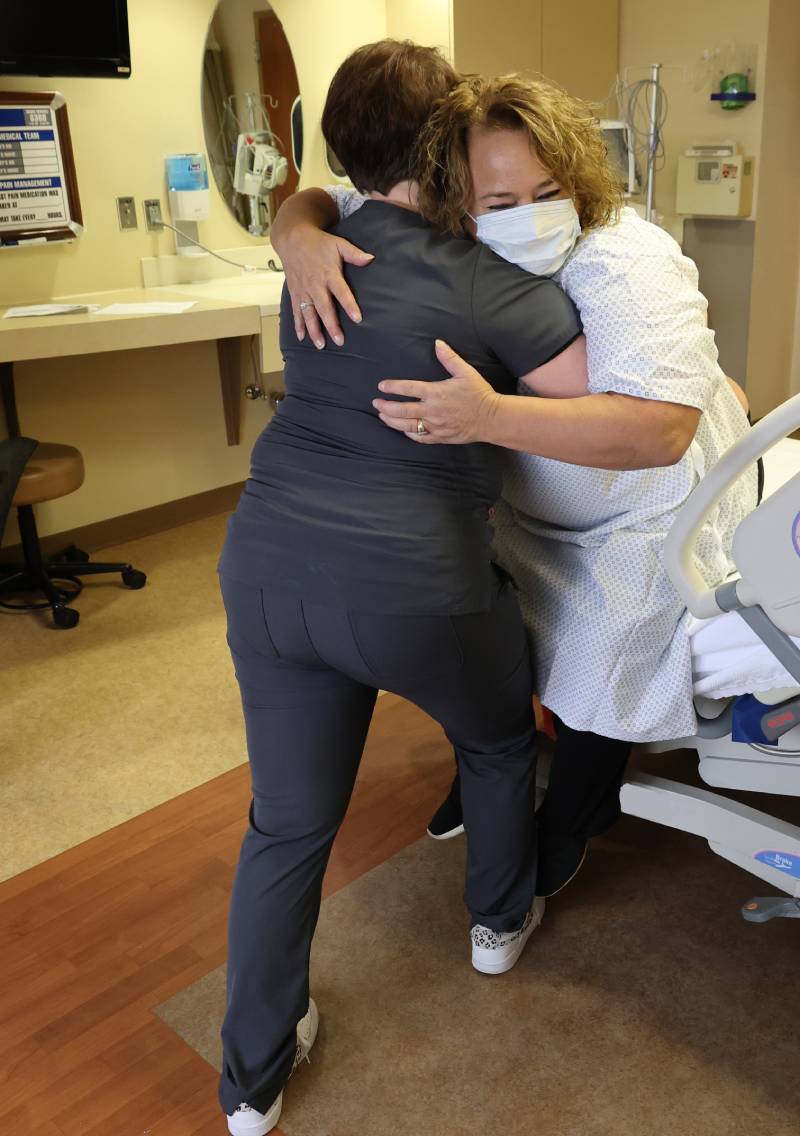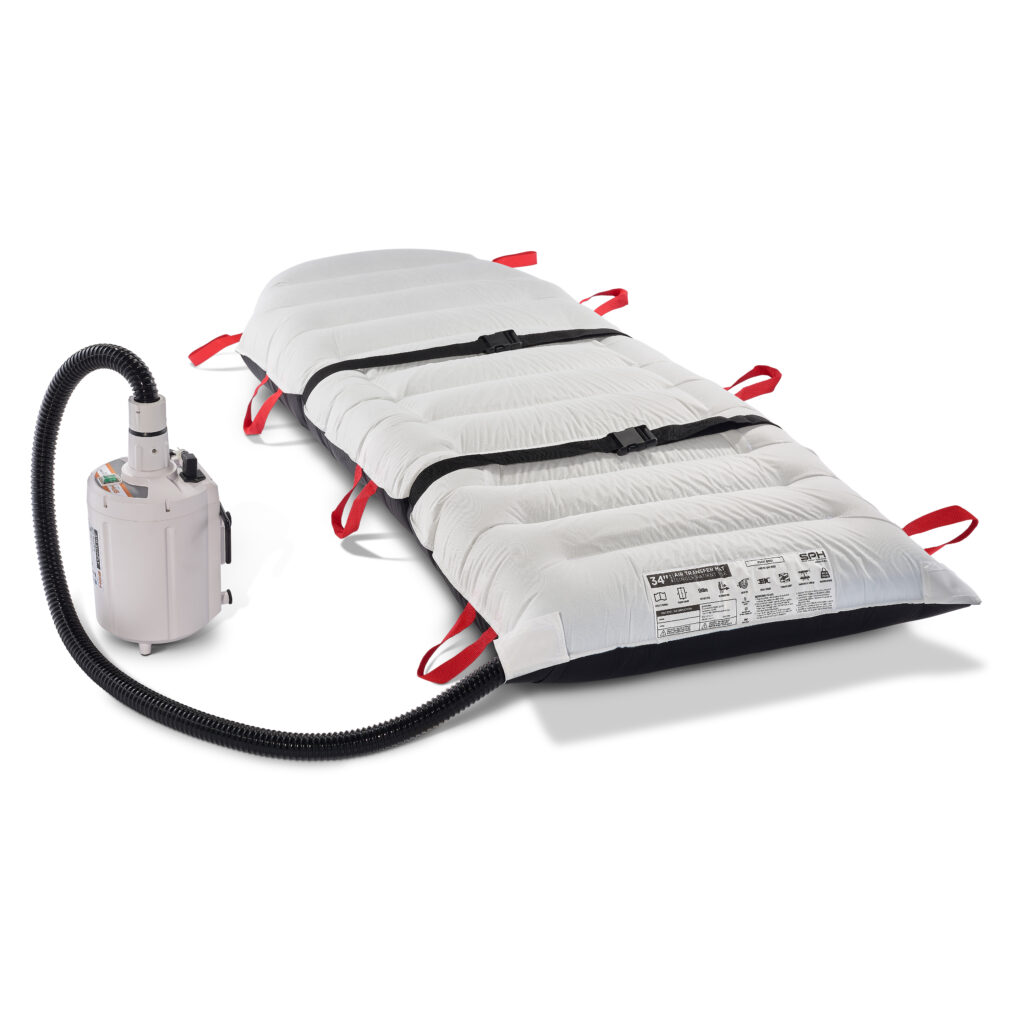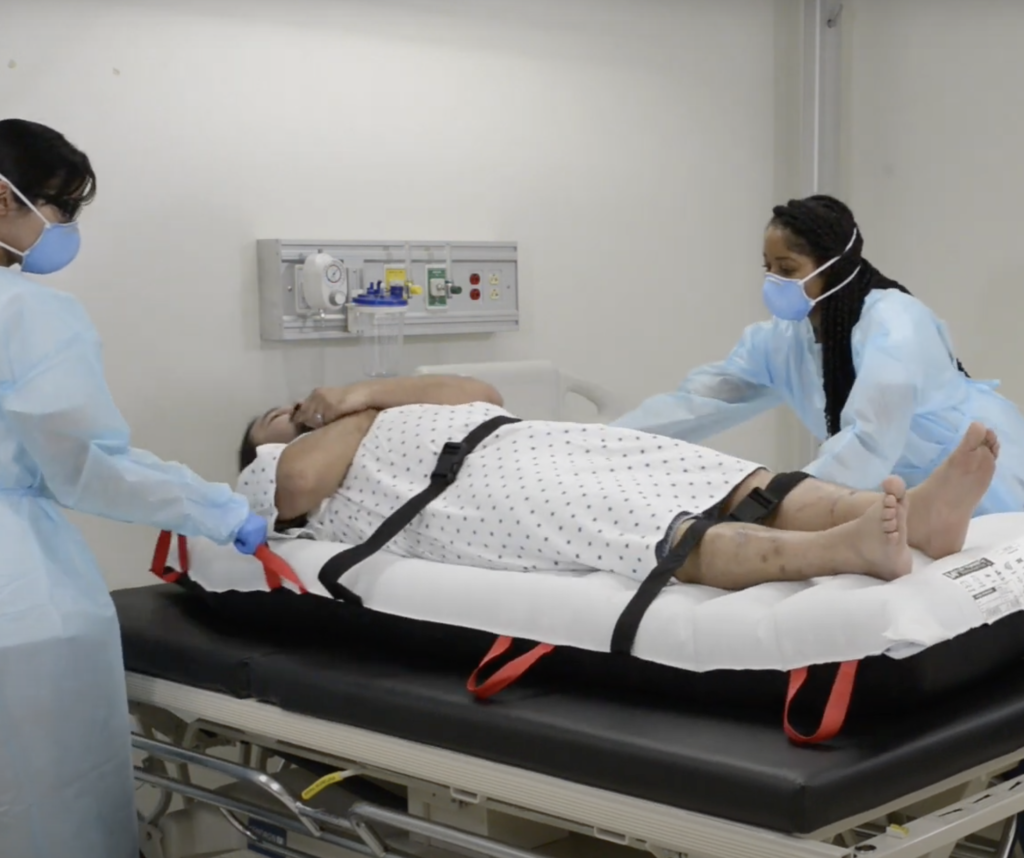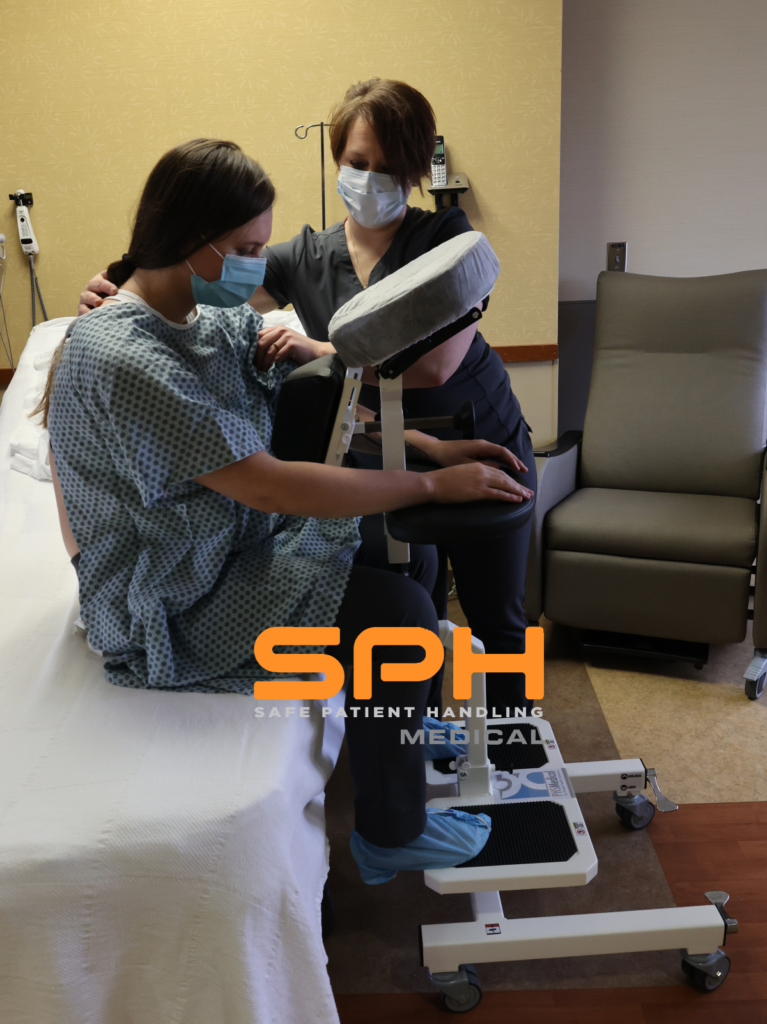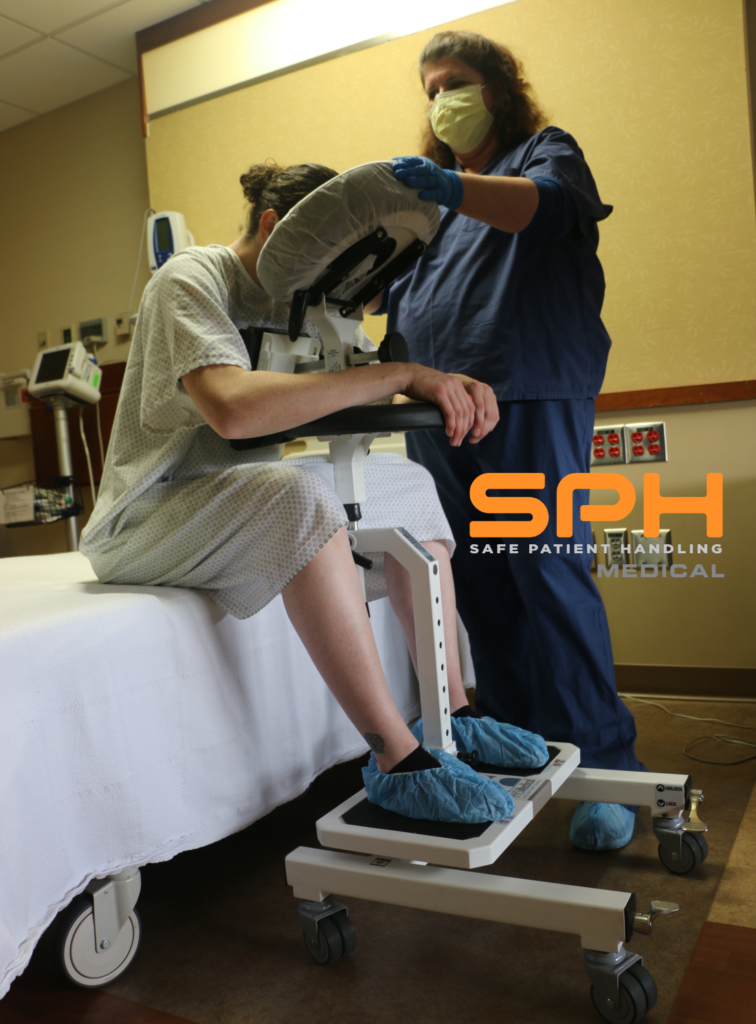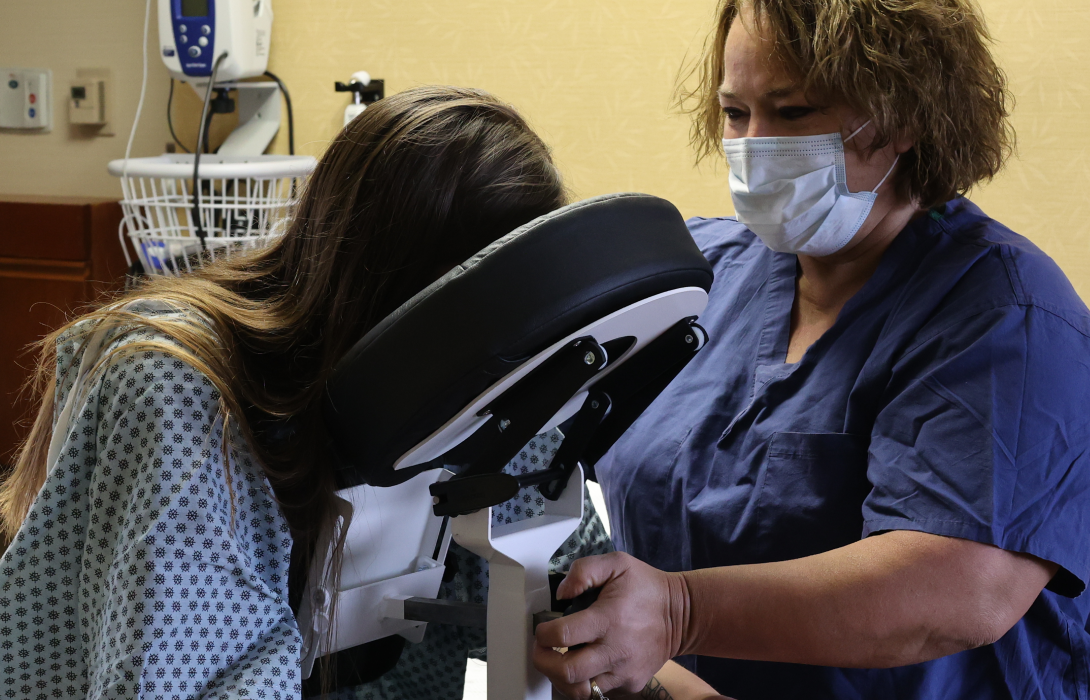In the past, patients who required analgesia given through an epidural or spinal blocks often required a handful of nurses and other clinical staff to conduct the procedure safely. Patients were held manually in a seated position with a flexed spine, often necessitating multiple medical professionals to support, provide counterpressure, or in some cases, catch a falling patient. Each of these manual patient handling tasks put the staff at risk. But now both patients and staff can successfully experience an epidural or spinal block procedure safely with the use of an epidural positioning device or EPD.
Using an EPD in the Surgery Department
When spinal blocks are necessary to provide patient pain relief prior to a surgical procedure, multiple anesthesia techs, nurses or other medical professionals may be employed to make sure that a patient is positioned correctly. But using an epidural positioning device can ensure that the surgery department is following safe patient-handling procedures without putting staff at risk while helping patients remain in the correct posture for the spinal bock injection. Since the use of the device will require no additional staff members once the patient is engaged, surgical techs and staff can be utilized for their expertise rather than taking part in holding or securing patients before or after the spinal is administered.
Using an Epidural Chair in the Labor and Delivery Unit
Patients preparing to give birth are frequently shifted into a seated, flexed position to receive epidural analgesia prior to giving birth. While tens of millions of epidurals are administered each year with their use only expected to escalate in the future, L&D staff are tasked with following safe patient handling guidelines that can be even trickier at the end stages of pregnancy. Many Labor and Delivery Unit facilities rely on the security of using an EPD as an injury prevention device for patients, nurses, OR techs and anesthesia techs. When a pregnant person must be secured in an uncomfortable or unstable position, like the seated and flexed position required for epidurals, they may require extra support from one or more staff members. Holding on, providing counterpressure or catching an unstable patient can hurt not only the patient but could easily injure a nurse or other medical professional needlessly when support from an epidural chair is available to provide stability.
position to receive epidural analgesia prior to giving birth. While tens of millions of epidurals are administered each year with their use only expected to escalate in the future, L&D staff are tasked with following safe patient handling guidelines that can be even trickier at the end stages of pregnancy. Many Labor and Delivery Unit facilities rely on the security of using an EPD as an injury prevention device for patients, nurses, OR techs and anesthesia techs. When a pregnant person must be secured in an uncomfortable or unstable position, like the seated and flexed position required for epidurals, they may require extra support from one or more staff members. Holding on, providing counterpressure or catching an unstable patient can hurt not only the patient but could easily injure a nurse or other medical professional needlessly when support from an epidural chair is available to provide stability.
Protecting Staff and Patients
Placing patients into the optimal cervical, thoracic or lumbar flexion is key to the successful administration of spinal or epidural medications. Patients undergoing hip or knee replacements, back procedures or delivering a baby all benefit from the correct placement of their medication or analgesic that will ensure their comfort before and during the procedure as well as promote a quick recovery afterward. But medical staff benefit just as much from the use of epidural chair equipment since they are now freed up from the physical requirements of holding and supporting patients who are undergoing this type of placement-sensitive procedure. Since ensuring patient safety is paramount for all medical professionals, those who assist in surgical and L&D situations where patients may fall or need physical support can avoid putting themselves at risk for their own injuries when a medical safety device like an epidural positioning device is utilized.
Contact SPH Medical to learn more about the EPD or request a quote.

